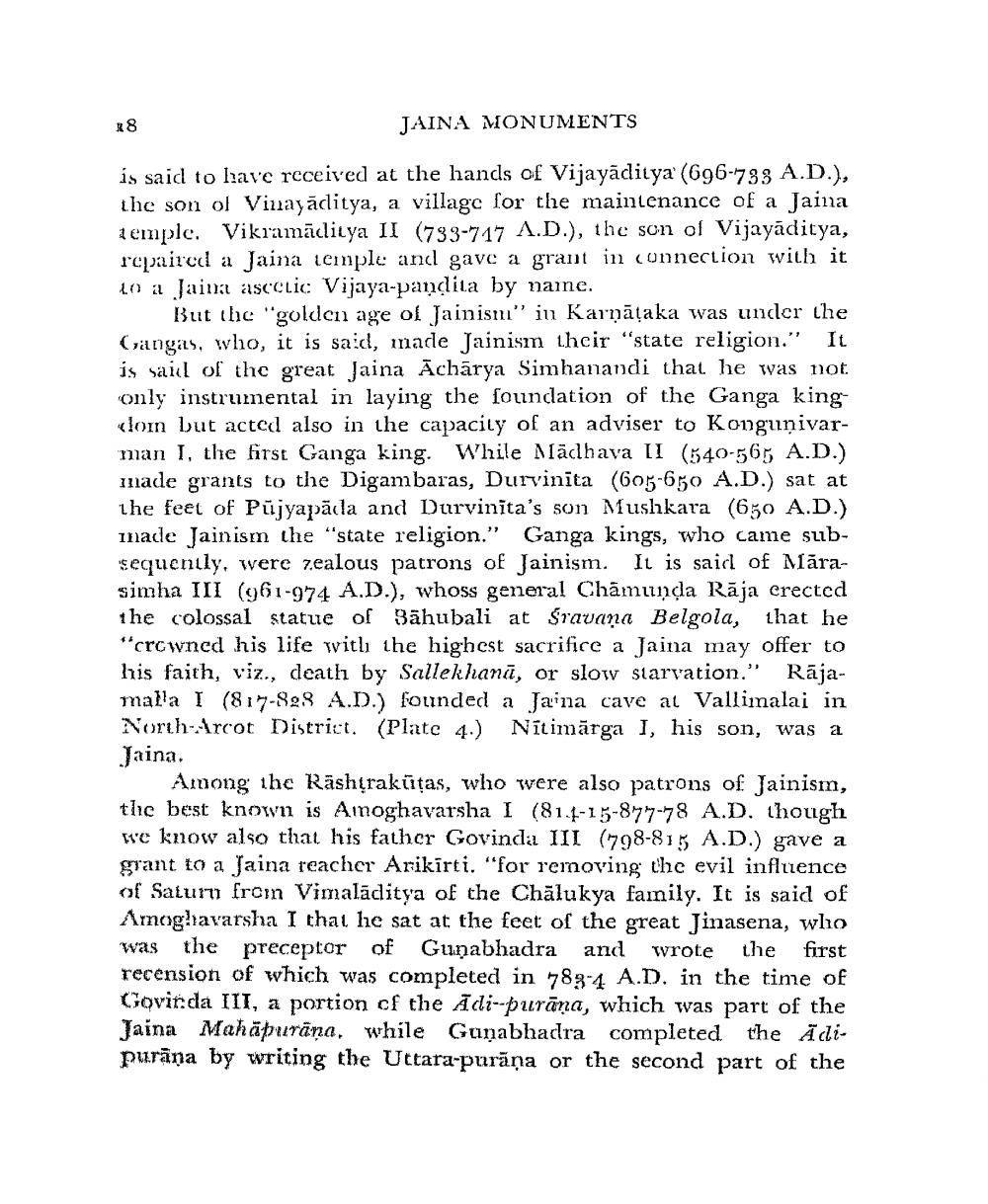________________
JAINA MONUMENTS
is said to have received at the hands of Vijayāditya (696-738 A.D.), the son ol Vinayāditya, a village for the maintenance of a Jaina i emple. Vikramāditya II (733-717 A.D.), the son of Vijayaditya, repaired a Jaina temple and gave a grant in connection with it 10 a Jaina ascetic Vijaya-pandila by name.
But the 'golden age of Jainism" in Karnātaka was under the Gangas, who, it is said, made Jainism their "state religion." It is saill of the great Jaina Acharya Simhanandi that he was not only instrumental in laying the foundation of the Ganga king«loin but acted also in the capacity of an adviser to Kongunivarman I, the first Ganga king. While Mlachava II (540-565 A.D.) made grants to the Digambaras, Durvinita (605-650 A.D.) sat at the feet of Pujyapäda and Durvinita's son Mushkara (650 A.D.) inade Jainism the "state religion." Ganga kings, who came subsequently, were zealous patrons of Jainism. It is said of Mārasimha III (961-974 A.D.), whoss general Chamunda Rāja crected the colossal statue of Sāhubali at Sravana Belgola, that he "crowned his life with the highest sacrifice a Jaina may offer to his faith, viz., death by Sallekhanā, or slow starvation.” Rājamalla I (817-828 A.D.) founded a Jaina cave at Vallimalai in North-Ircot District. (Plate 4.) Nītimārga I, his son, was a Jaina.
Among the Rashtrakūtas, who were also patrons of Jainism, the best known is Amoghavarsha I (81.1-15-877-78 A.D. though He know also that his father Govinda III (798-815 A.D.) gave a grant to a Jaina reacher Arikīrti. "for removing the evil influence of Saturn froin Vimalāditya of the Chālukya family. It is said of Amoghavarsha I that he sat at the feet of the great Jinasena, who was the preceptor of Gunabhadra and wrote the first recension of which was completed in 783-4. A.D. in the time of Govinda III, a portion of the Adi--purāna, which was part of the Jaina Mahapurana, while Ganabhadra completed the Ä dipurāna by writing the Uttara-purāņa or the second part of the




